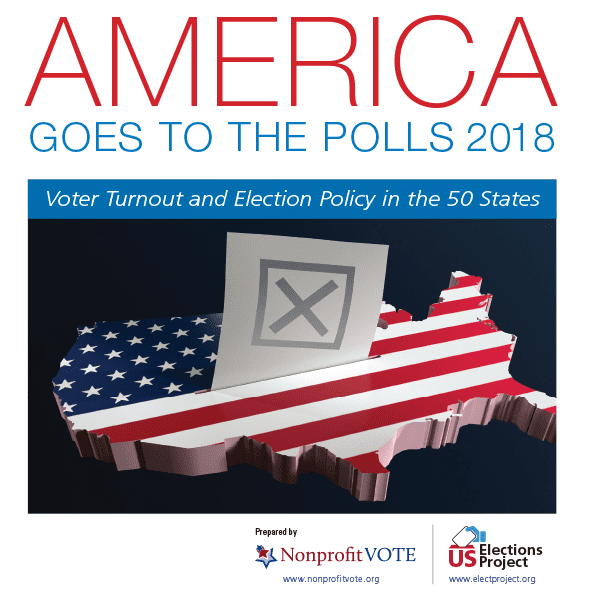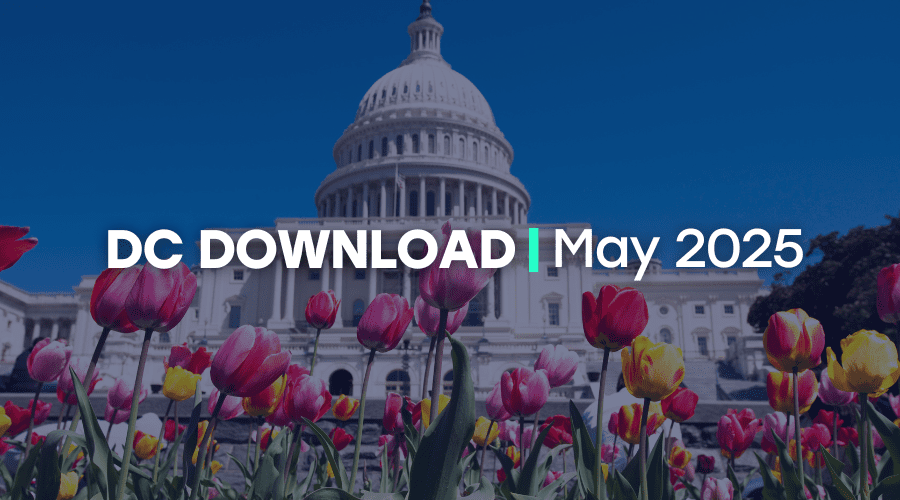It should come as no surprise to our readers that Independent Sector has an interest in promoting the ease and accessibility of voting for all citizens. We believe that when people vote, they signal to our elected officials that they not only care about specific issues, but also are the most knowledgeable about their own needs and best equipped to identify those who are able to achieve real change. Unfortunately, there are barriers that prevent people from being able to exercise their legal right to vote. New research by Nonprofit VOTE and the U.S. Elections Project, America Goes to the Polls 2018, identifies policies that are making it easier for people to exercise that right.
We know that voter turnout in the 2018 midterm elections officially set a 100-year record, being the highest midterm turnout since 1914. We also saw the largest increase in turnout over the prior midterm in U.S. history. This report walks through the states with the highest and lowest voter turnout and breaks down which policies have the greatest impact on voter turnout. Spoiler: States with the fewest barriers have the highest turnout. I was able to speak with Brian Miller, executive director of Nonprofit VOTE, to talk about the key takeaways from their new report.
RV: Why does Nonprofit VOTE think that this research is worth conducting?
BM: This report is the only report that offers an official accounting of all 50 states and their voter turnout. As such, it offers a unique, real-world opportunity to assess the impact of election-related policy on voter turnout. It’s crucial for anyone who wants to monitor the health of our democracy and see how the decisions on state voting policies affect how many citizens show up to the polls. In doing so, the report serves as a road map for states that want to learn what they can do to strengthen their electorate and avoid the mistakes that weakened turnout in other places.
RV: What is the one thing you want nonprofits to understand about this research? What do you want them to change about their work (or keep in mind)?
BM: It’s easy to look at elections, especially last year’s, and see the big flashing lights of a national referendum on the administration. No doubt, that contributed to last year’s record turnout. But what seems to be really making a difference, year-after-year, are the voting policies each state employs. This shouldn’t be a surprise but it’s really, really important to show that the states that remove the most cumbersome obstacles and employ policies like Same Day Voter Registration, Automatic Voter Registration and Vote at Home routinely see better turnout.
RV: What surprised you in these findings? What do you think led to/caused those findings?
BM: While Automatic Voter Registration is a positive reform spreading across the country, we should recognize that it won’t lead to an overnight boost in voter turnout, but rather a slow, gradual climb in turnout over the course of several years. That’s because only a small share of voters, perhaps 20 percent, visit their motor vehicle department in any given year. So while the policy is a good one, we need to be patient in assessing its impact. However, as the report notes, we did see significant surges in registration rates in states with Automatic Voter Registration and there are very promising studies from Oregon, which has had this policy for the longest period. By comparison, Same Day Registration has an almost immediate positive impact on voter turnout after implementation since it’s applicable to all eligible voters, not just those who interact with their motor vehicle department.
 RV: What do you think can be done at the federal level to level the playing field across states to set some consistency in voter registration?
RV: What do you think can be done at the federal level to level the playing field across states to set some consistency in voter registration?
BM: At the end of the day, we likely will need federal legislation to ensure states across the nation are working to ensure all their eligible citizens can participate and vote. But for now, the federal government is caught up in partisan gridlock, so the real change is coming from the states. That’s where advocates and organizers have been successfully moving the needle.
RV: Is there anything else you’d want our readers to know?
BM: Your blood, sweat and tears count, especially at the state level. That’s where the policy fights are really making headway. Just look at the rapid spread of Same Day Registration from seven states in 2006 to 15 now and 20 by the next election in 2020. Automatic Voter Registration came out of nowhere a few years ago to the law of the land in 17 states and DC now. This didn’t just happen. It was thanks to groups in states like Colorado, Utah, New Mexico, New York, and others who fought hard and pushed the envelope. They knew it would go a long way to making a difference and that in the end, our democracy does in fact work best when more people can participate and vote.
Read more about America Goes to the Polls, and register for a free webinar for nonprofit leaders and organizers on April 2 that will focus on the findings.




